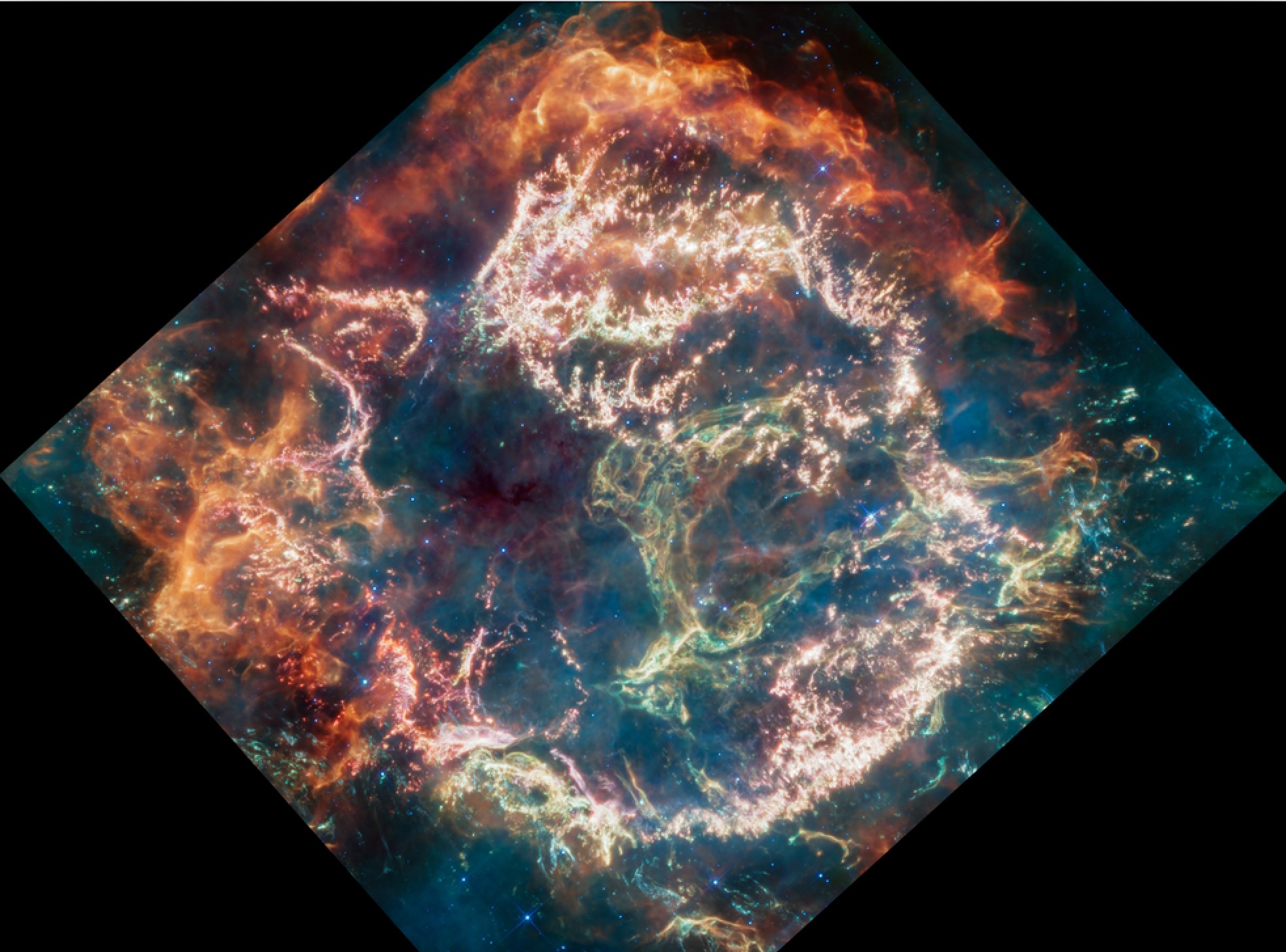James Webb Space Telescope studies wreckage of titanic cosmic explosion (video, photo)
The powerful space telescope captured a stunning image of the Cas A supernova remnant.
A new image from the James Webb Space Telescope (JWST) shows in stunning detail the wreckage of a cataclysmic supernova explosion.
The supernova remnant, known as Cassiopeia A (Cas A), formed about 340 years ago from our perspective here on Earth. This makes the 10-light-year-wide Cas A one of the youngest clouds of supernova wreckage we know of. With images like this, scientists can perform "cosmic forensics" to better understand what happens when stars die.
Material expelled by supernovas such as this goes on to disperse throughout galaxies and becomes the building blocks for the next generation of stars and planets. Around 4.6 billion years ago, such a process helped forge the sun and the planets of our own solar system and paved the way for living things, supplying elements like the calcium in our bones and the iron in our blood.
Related: 12 amazing James Webb Space Telescope discoveries

Cas A can provide a window to the very early stages of this process and, for this reason, the object — located 11,000 light-years from Earth in the constellation Cassiopeia — has been widely studied by astronomers with ground and space-based telescopes.
"Cas A represents our best opportunity to look at the debris field of an exploded star and run a kind of stellar autopsy to understand what type of star was there beforehand and how that star exploded," Danny Milisavljevic of Purdue University in Indiana, principal investigator of the Webb program that captured the new observations, said in a NASA statement on Friday (April 7).
But few previous observations have shown the complex structure and vivid colors of Cas A to this level of detail. And translating infrared light from Cas A — the wavelengths JWST observes in — to the vibrant colors seen in the new image isn’t a purely aesthetic choice. It also reveals a wealth of scientific information that researchers are only just beginning to access.
Breaking space news, the latest updates on rocket launches, skywatching events and more!
Performing forensics on a dead star
At the top of the newly released JWST image, and at the outer edge of a bubble of material blown out by the supernova, veils of orange and red represent emissions from warm dust, NASA officials said. This is where material ejected by the exploding star has been driven into surrounding gas and dust, heating it and causing it to glow.
Within the bubble and running to its center are bright pink clumpy filaments, which represent material from the exploded star. These filaments produce emissions from heavy elements like oxygen, neon and argon, which the doomed star forged via nuclear fusion prior to its destruction.
In millions of years, these elements may spread out from Cas A and help form a new stellar population.
While the process by which supernovas spread the elements for future stars, planets, and Space.com readers is well understood by scientists, what isn’t as clear is how early galaxies came to be filled with large amounts of cosmic dust. Investigating Cas A with JWST could help solve this mystery, in addition to providing us with breathtaking images of deep space, mission team members said.
Follow us on Twitter @Spacedotcom or on Facebook.

Robert Lea is a science journalist in the U.K. whose articles have been published in Physics World, New Scientist, Astronomy Magazine, All About Space, Newsweek and ZME Science. He also writes about science communication for Elsevier and the European Journal of Physics. Rob holds a bachelor of science degree in physics and astronomy from the U.K.’s Open University. Follow him on Twitter @sciencef1rst.
